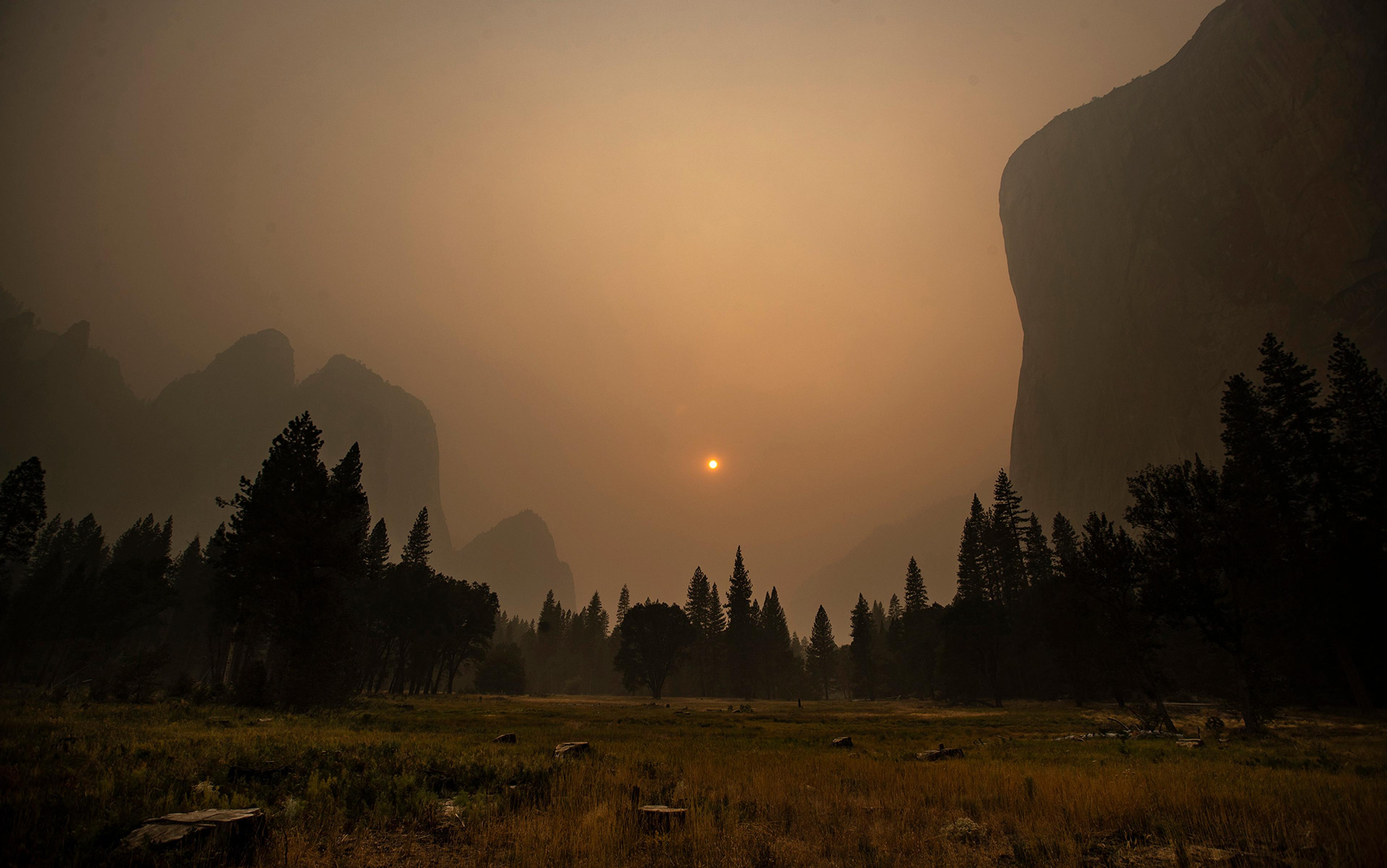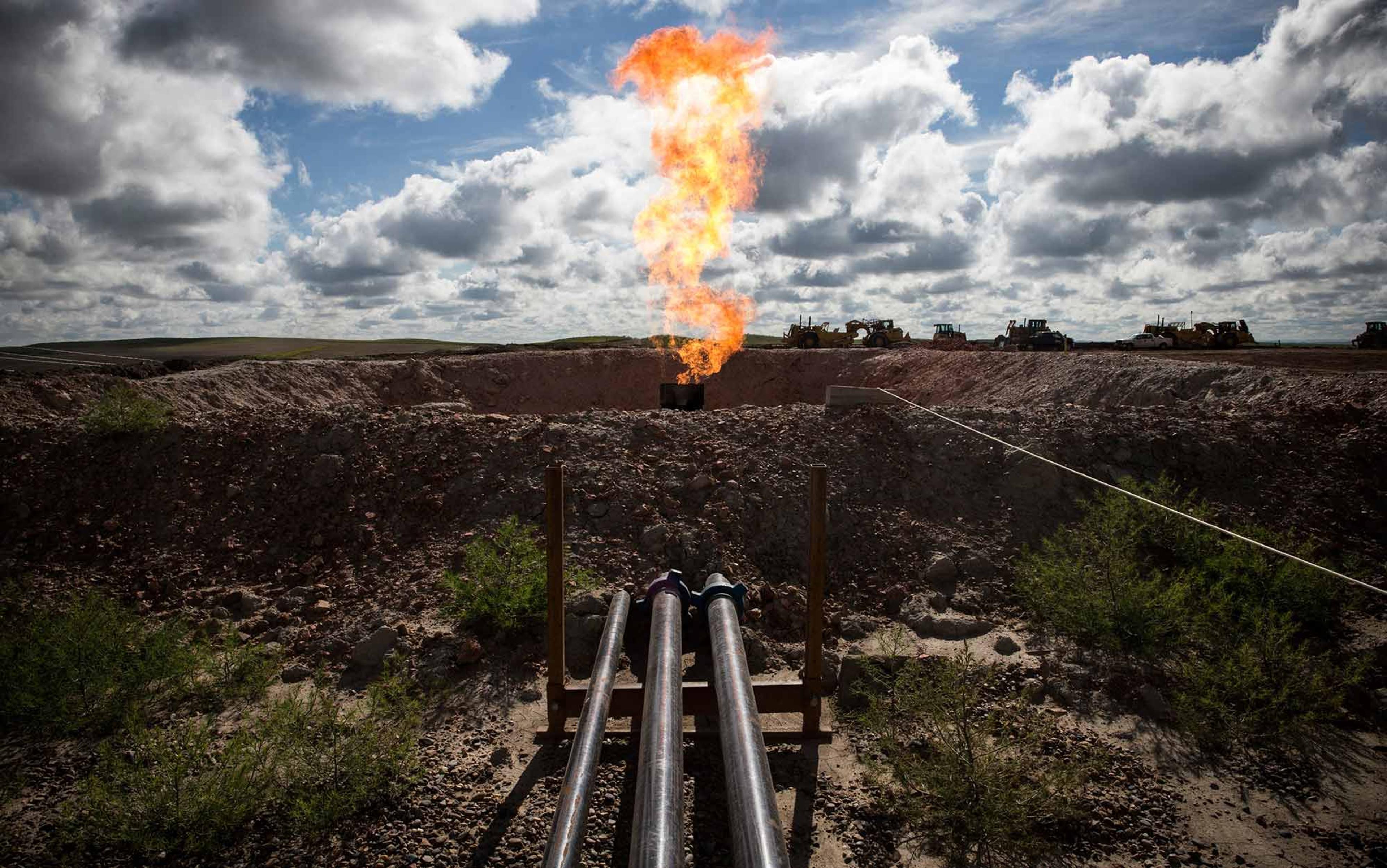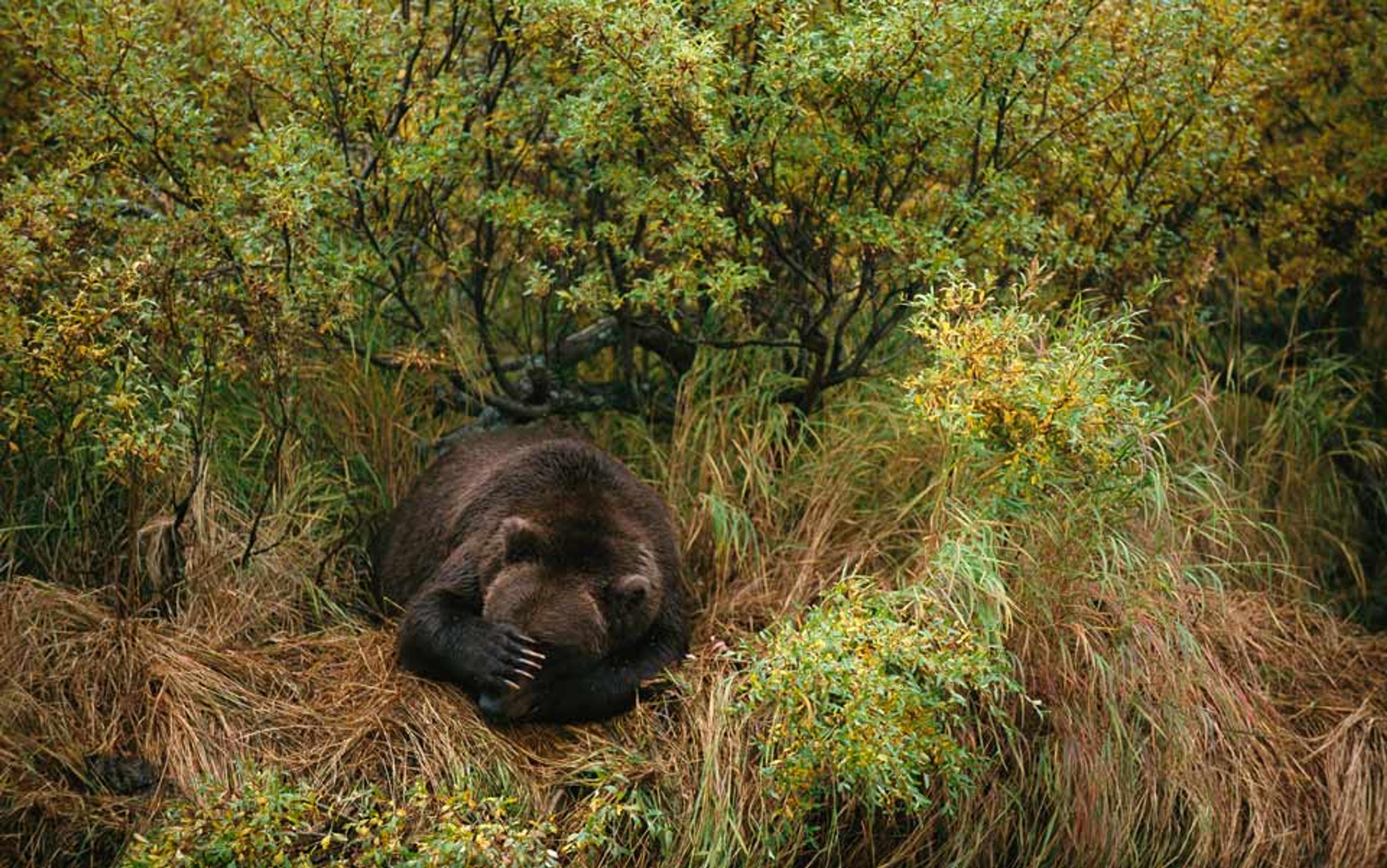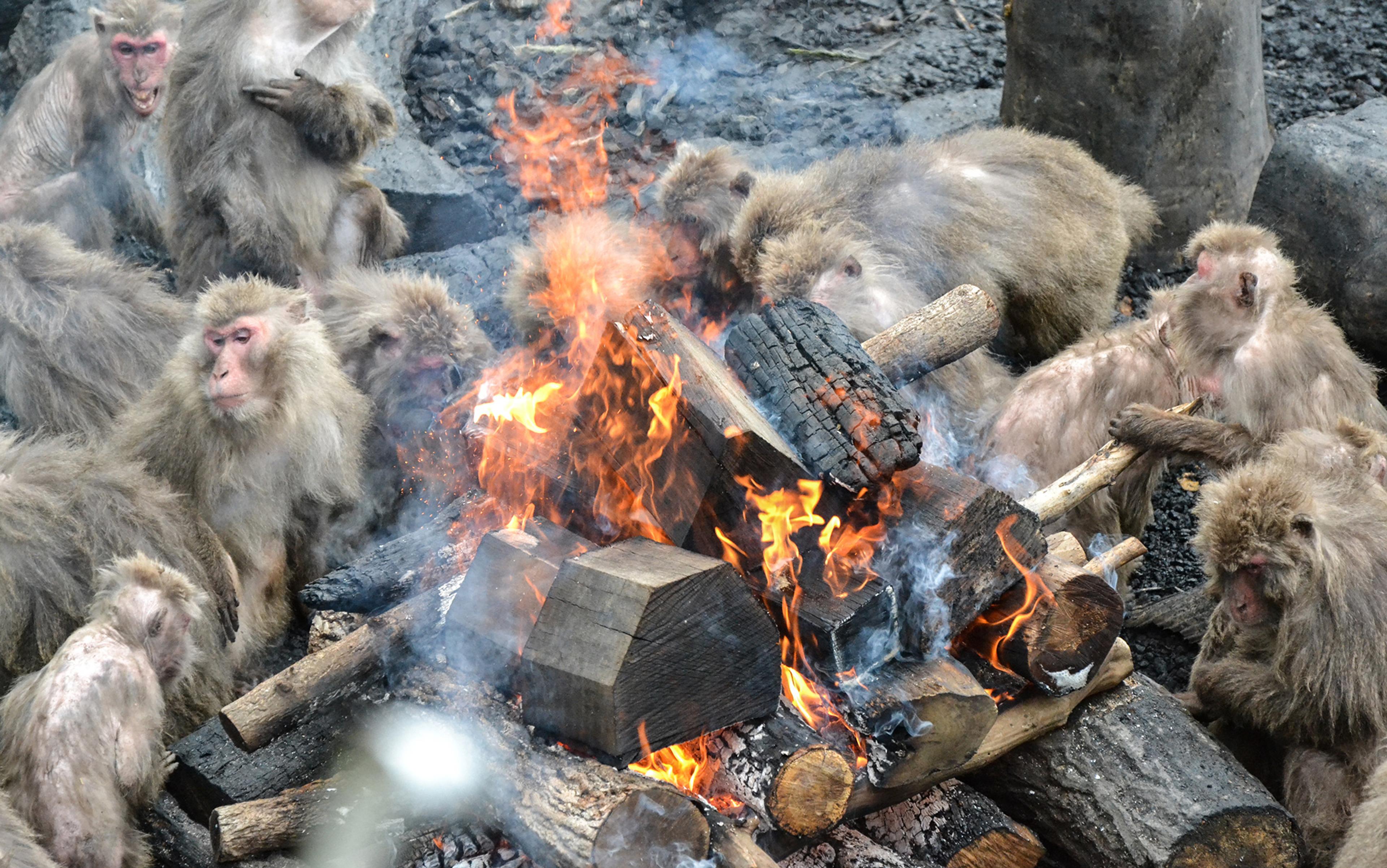On 19 September 1909, Aldo Leopold, then a young ranger with the US Forest Service, shot two timber wolves in Arizona’s White Mountains. He noted the episode casually in a letter home. ‘In those days we had never heard of passing up a chance to kill a wolf,’ he would recall, any more than they left fires to burn. But the incident, like embers in an old campfire, glowed in his mind, and 35 years later he fanned it into one of his most celebrated meditations, ‘Thinking Like A Mountain,’ in which he described standing over the she-wolf and watching the ‘fierce green fire’ in her dying eyes. He wondered if shooting the wolf had helped unhinge the larger landscape. ‘Too much safety,’ he said, yielded only more ‘danger in the long run,’ pointing to irruptions of deer, and the ravaged landscapes they created, after their predators had been removed. Leopold quoted Henry David Thoreau’s dictum, ‘In wildness is the salvation of the world.’ Four years later, Leopold died while fighting a fire on a neighbour’s land.
Leopold’s essay reached a wide audience in 1949 when packaged with others to make A Sand County Almanac. By the time the anthology was republished in 1966, the essay — moral epistle might be more accurate — had become one of the documents that shaped how 20th-century Americans viewed their remaining wild lands. It helped make the wolf the living emblem of the wild, and wolf restoration a measure of ecological enlightenment. About 10 miles southeast of Leopold’s kill site, Mexican gray wolves were reintroduced in 1998. But his insights had also helped underwrite a campaign of nature protection that focussed on the preservation of pristine lands. Leopold was the architect of America’s first ‘primitive area’, the Gila, located in an adjacent national forest, which became the inspiration for a National Wilderness Preservation System (NWPS) 40 years later. In 1984, the NWPS acquired the 11,000-acre Bear Wallow Wilderness, about 10 miles southwest from where Leopold shot his wolf. Between them, these three sites form a triangle of environmental thinking transformed into action — the deed into an idea, the emblem into a restored species, the wild into a legally gazetted preserve.
A century after Leopold’s wolf kill, a mammoth wildfire boiled out of the Bear Wallow Wilderness, blasted over the wolf reintroduction site, and overran Leopold’s vantage point above the Black River. The Wallow fire, kindled by an untended campfire, burned 50 times as much land as the wilderness held. An idealistic green fire met an all-too-real red one.
At the same time that Ranger Leopold was shooting timber wolves, he was swatting out forest fires. If fewer wolves meant more deer, and no wolves meant ‘a hunter’s paradise’, so fewer fires meant more timber, and no fires a forester’s paradise. Fire prevention posters from the era even characterised wild fire as a flaming wolf, a ravenous killer that needed to be hunted down and shot.
Lightning fires were attacked and extinguished at their origin. People quit setting tame fires to substitute for nature’s wild ones. And overgrazing slow-metabolised on a vast scale what fire had formerly fast-burned. Cattle and sheep cleaned out the country’s combustibles. Flame might kindle in the isolated snag; it could not spread. Over decades, however, the removal of predatory fire allowed a woody understory to flourish, akin to the metastasising deer population that blew up after the wolves were extinguished. Both yielded a sick, impoverished landscape.
Over time, the belief in the intrinsic evil of free-burning flame also yielded to the realisation that the removal of fire, like that of the wolf, could unravel whole ecosystems. It seemed that the best strategy for restoring both (and atoning for past transgressions) was to stand back and let nature heal itself. Initially, nature would need some help by transplanting wolves and setting controlled fires. But these were prosthetic practices, necessary only to oil the rusted gears of nature’s machinery.
So a campaign to restore fire ran parallel to that for reinstating wolves. (This was a leap of insight that Leopold himself never quite managed; he focussed instead on overgrazing, which lay behind fire’s near extirpation in the Southwest.) But while the histories of wolf and fire became oddly symmetrical and occasionally linked, the campaign to return free-burning flames was trickier. Fire could blow up in ways wolf packs could not, and smoke palls could range far beyond designated preserves. Besides, red fire lacked Leopold’s parable of the dying green fire in the eyes of a wolf to invest it with moral urgency. Very little fire was actually reinstated.
In the Southwest, neither the population of wolves nor of fires returned to anything like their former levels. Deer and elk remained at record numbers. Much of the landscape overflowed with a slow irruption of combustibles suitable to stoke big fires. There was too much cropping by animals, too little by flame. Efforts to preserve pristine patches yielded only more stuff to burn. There was no effort to restore fire to its historic levels either through prescribed burning or granting more room to natural ignitions. The landscape of the White Mountains teetered on a metastable ridgeline. Here the parallel paths of wolf and fire diverged. Wolves, when reintroduced, bred slowly and affected their habitats indirectly. Fires kindled often and transformed their settings suddenly. A single spark could transmute thousands of hectares almost instantaneously.
The Wallow fire could no more behave as it would have in presettlement times than could a wolf pack dropped into a Phoenix shopping mall
On Memorial Day weekend, May 2011, flames returned. Between 29 May and 12 June, the Wallow fire, amid seasonal drought and high winds, bolted over 185,000 hectares; by the end of June, its perimeter encompassed 224,000 hectares. Suppression costs reached $109 million. Neither prescribed nor truly natural, this was a feral fire. It started from a slovenly kept campfire and burned through decades of forests that had been destabilised by grazing that destroyed their capacity to carry surface fire; by subsequent logging that broke their structure; and by doctrines of fire exclusion that prevented nature’s economy from brokering fuel and flame. The Wallow fire could no more behave as it would have in presettlement times than could a wolf pack dropped into a Phoenix shopping mall.
But what kind of fire was it? It displayed a combination of size, intensity and speed unlike anything in the historic record. Probably fires had once burned as widely — but by pulsing through long seasons in which they crept and swept over hills and ravines as the mutable comings and goings of local weather allowed, not in landscape-scale surges. Undoubtedly, too, spring winds, underwritten by single-digit humidity, had once blown flame through the canopies of mixed-conifer spruce and fir and left comparable landscapes of white ash and sticks. But seasonal drought seemed to have coarsened and become a new normal, probably under the impress of global warming. Over the course of a century, that mixed landscape of congested combustibles had thickened and spread. The baleful bequest of fire exclusion, and too-timid reintroduction, meant that the only fires allowed were those that occurred under the worst of conditions.
Like all fires, the Wallow synthesised its setting. The legacy of the past was alloyed with the changing circumstances of the present: both had veered to such extremes that one monster fire could swallow in a single gulp what historic fires would have nibbled away at over the course of a century. One thing is certain: the Wallow was not what forest officers had in mind when they sought to reintroduce the ecological alchemy of free-burning flame.
The Wallow’s flames did not destroy Leopold’s wildness parable, any more than they destroyed the forest in which it took place. But in burning over story and landscape it has transformed both. Did the Wallow represent the blowback from a failure to implement Leopold’s wilderness vision fully? Was the Wallow an old debt suddenly called in, or the marker for a fundamentally new era? Did the Wallow renew the parable of green fire as it did the aspen groves? Or did the red fire burn Leopold’s wolf and wilderness story to its roots? A burned mountain might think differently than an unburned one.
What emerges out of a meditation at the old wolf kill site today is a modern parable of the Anthropocene. It describes what happened when the Earth’s keystone species for fire — humanity — changed how it did business. Fire has existed on Earth for 420 million years, but only in the Pleistocene did a creature acquire the ability to start it. Our species power is literally firepower. While the Anthropocene has many definitions, the most useful is the originating version: that it began when humanity started burning fossil fuels on a serious scale. That provided the fulcrum to leverage the other environmental changes that make modern times so different from ancient.
The setting of the Wallow fire is the outcome of an historical paradox. Industrial societies — those most gluttonous of natural resources — are also the ones prone to create nature preserves on a significant scale. The curve of formally protected nature reserves traces closely the curve of fossil-fuel combustion. Nested within this paradox is a distinctive American story in which a relatively unbridled capitalist society, in the full flush of the Gilded Age, set aside roughly a third of its national estate to shield against the ravages of its own economy. A significant fraction of that (80 million hectares) has been committed to national parks and wilderness.
When humanity opted to further our firepower by burning fossil landscapes exhumed from the geologic past, we quit burning surface landscapes. Apart from technological substitution, the shift was a deliberate policy intended to protect natural places. We would make them safe. The founding legislation typically identified those sites as sanctuaries ‘from fire and ax’. We would use the powers of the state to end the depredations of the ax. We would use our enhanced fire power — our new fire engines — to suppress what fires nature or accident kindled. The immediate outcome was apparent success: forests remained standing and conflagrations were halted. When Leopold stood on the rimrock above Black River, that process was still gearing up.
The real consequences took several decades to become apparent. The shift from external to internal combustion shocked the system as surely as overgrazing or clear cutting: it just wasn’t as visible. The land adjusted to the absence of fire. But unlike wolves, fire would not be banished from the scene. Ignition remained unrelenting. What changed, first, was the ability of the land to carry flames, and then, as combustibles piled up, the ability of people to stop them under bad conditions. When hikers in the Bear Wallow Wilderness left a campfire on 29 May 2011, it did what similar fires had not been able to do for a long time. It blew up and bolted across the length of the White Mountains, overrunning 224,000 hectares as it went. The legacy of the past powered that conflagration as surely as did the June winds. What happened to the Apache National Forest has been repeated across the American West for nearly 25 years. Attempting to banish open flame has made fire unmanageable, a synecdoche perhaps for the application of our new firepowers generally.
We created an ecological insurgency, and only by controlling the countryside can we quell it
We now know that attempting to abolish fire from natural sites for which it is indigenous is a mistake as profound as mindlessly extirpating wolves. Yet letting wildfire ramble amid the global metastases of the Anthropocene is an act of faith-based ecology. If all we want is the wild, we will get it. If we expect a usable mix of ecological goods and services, we will have to add our hand to nature’s. We created an ecological insurgency, and only by controlling the countryside can we quell it.
The classic preservationist solution is to leave the landscape to sort itself out, even if this takes decades and the outcome is unlike anything experienced before. Nature has deep powers of recuperation. But when wildfires off the evolutionary charts are burning areas a hundred times the size of the 2,000 hectares allowed for the smallest legal wilderness, there might not be much resilience left. Our nature reserves, even the largest, will burn with properties probably not seen before and on a scale not previously experienced.
Paradoxically, their recovery might depend on the character of their surrounding landscapes; these we can tweak into functional biotic landscapes to advance our conservation goals. Such an idea inverts our traditional notions: the preserved core might not be the refugium for its surroundings, but those surroundings could be the source of recovery for the nominal core. The core might still testify to the Wild. But the buffer zone could hold the ecological goods and services needed for resilience and regeneration.
Aldo Leopold’s parable was written at a time when the state had to intervene to halt the ravages of global capital and folk migrations into the west. Its primary means were to set lands aside as reserves and to shield them from the practices that wrought wreckage beyond those borders. That strategy kept out landclearing, settlers, and abusive burning. But the internal management of those lands has made them prone to flare-ups and crashes and the losses of what they were established to conserve. In the coming decades, the state will likely need to intervene within those reserved lands to prevent the indirect ravages of the Anthropocene.
For 20 years, my wife and I have had a cabin at Alpine, Arizona. We had met, worked for many years (15 for me, on a fire crew), and married on the North Rim of Grand Canyon National Park. We found in the White Mountains a similar feel to the Rim, allowing for volcanoes instead of gorges. I spent years landscaping in the expectation that some day a fire would shower embers from the surrounding hills. On 3 June two years ago, the Wallow streaked across 25,000 hectares like a bolt from a crossbow. It burned all around us. It incinerated our detached wood pile. It flash-fried our young aspen, oak, and pine. It scorched old pine and excavated cavities in ancient oak that everyone had thought immune to flames. All in all, the land was pruned, not destroyed. The house came through without a scorch mark.
I gave the mountains two summer rains to recover, then visited the Leopold wolf-kill site, which lay halfway between the fire’s origin in the Bear Wallow Wilderness and our place in Alpine. I found the broken rimrock overlooking Black River that Leopold described as the place from which they had shot. This time, the only movement came from thunderheads to the west, dark with rain and lightning.
From the rimrock, I could identify three distinct landscapes, each with a characteristic firebranding from the Wallow. In the distance loomed a domed crestline. Its higher elevation meant stronger winds but also heavier rainfall and denser woods, a combination that argued for crown fire; and in fact the Wallow’s surge had scoured them clean. Now tangles of aspen and brush struggled beneath hillsides bleached with whitened trunks. At my feet, boutique burning had been the rule. Low-branched fir and spruce here and there had torched or been killed by cambium scorch, but the ravine had otherwise shielded the site from wind and a rush of flame. Between them sprawled a landscape of ponderosa pine, the region’s signature forest, one adapted to frequent surface fires. The Wallow burned it in patches. Where exposed to the winds and perturbed by an understory choked with combustibles, whole groves had burned off like gas flares. Others the fire skipped altogether. Elsewhere, swathes had burned with something like their historic character — a good burn, resetting the biotic clock.
The new ecological forces were pulling the landscape apart. Paradoxically, it was the safe approach — strict preservation — that could prove dangerous
It was a middle view of a middle landscape from a place midway between the legally wild and a historic hamlet. A first sweep seemed to confirm the classic preservationist model of core and buffer. The ravine had largely escaped, the crestline had been savaged, the middle pinelands had absorbed the transition. The same processes operated as in Leopold’s day. A slower scan of that panorama suggested that the scale and tempo of events was new, and that this shift signified, like the conversion from surface fire to internal combustion, a change in kind that threatened to turn the old prescriptions inside out. The new ecological forces were pulling the landscape apart. What might hold them together was that middle, and what would hold the middle was active management. Paradoxically, it was the safe approach — strict preservation — that could prove dangerous.
In the American West generally, there are some fire officers who yearn for a return to the days of full suppression. The outcomes might have been self-defeating but their administration was unambiguous. Others seek through strategic slashing and controlled burning to get ahead of the problem and create resilient firescapes, even as they admit the faltering pace of reform. The Four Forests Restoration Initiative, the largest, part of which spills into the Apache National Forest, aspires to restore up to 20,000 hectares a year for 10 years. The Wallow burned that much in two weeks. The majority — the default — position, however, accepts that it is too late to proactively intervene, that worsening fires will come, and that the best we can do is to back off, provide point protection to communities and biotic assets, and burn out from secure lines. In such a big box model, the land area burned annually and overall will increase dramatically; some of it to good ecological effect, some ruinous. That is not as intellectually satisfying as a firm mandate to put all fires out or to put them in, but it is what is happening. It might well be the future of environmental practices generally.
From the rimrock I could see how the Wallow fire integrated everything done and undone over a century with the silent stresses encoded in the name Anthropocene. There is no way to keep out climate change, unhealthy biotas, invasive species, beetle and budworm swarms the size of states, nor the relocation of carbon from the Paleozoic to the Colorado Plateau, there to burn again. To do nothing is to risk losing everything save the notion of the Wild itself. To do something will guarantee errors. It was easy early in the 20th century to identify the causes of land-scalping and wanton degradation. It’s tricky in the early 21st to track the tremors of the Anthropocene and to distinguish too little from too much safety. To always stay the hand has an administratively appealing directness, as always suppressing wolves and fires did in the past. To intervene selectively requires a messier co-ordination between hand and mind. The choice is not as simple as whether to pull a trigger or not.
What was in the green eyes of a dying wolf became apparent only in retrospect. What we might see of the future in the red eyes of a dying fire regime is an exercise in pyromancy. What is clear is that in the coming years we will likely have lots of occasions to look.






